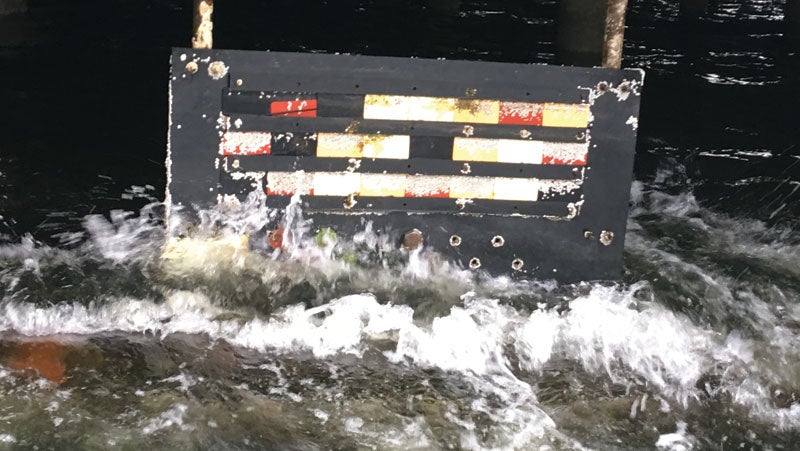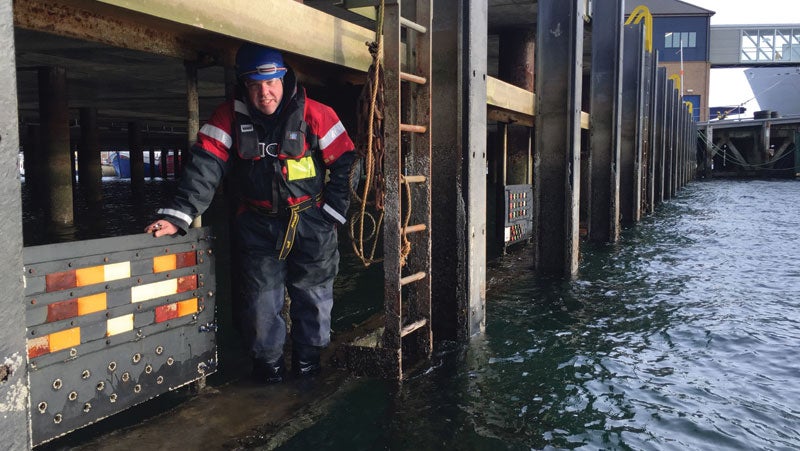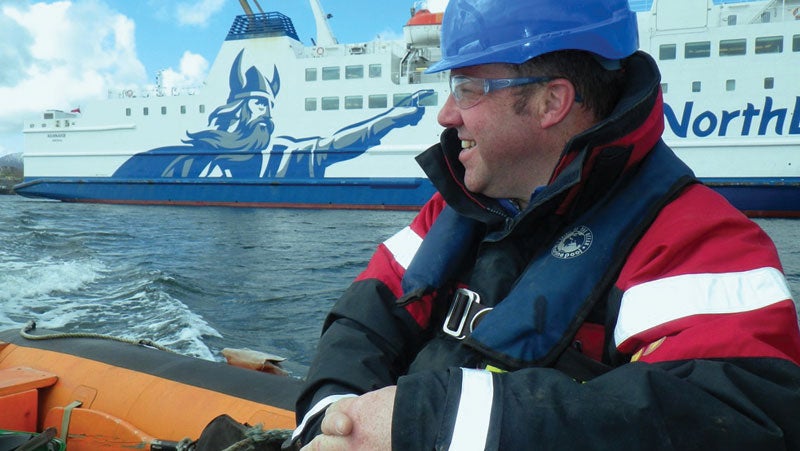The North Sea, "the shallow, northeastern arm of the Atlantic Ocean, located between the British Isles and the mainland of northwestern Europe,"1 is one of the world’s most dangerous seas with punishing weather that often batters vessels attempting to navigate its waters.
Because of its rich oil and gas deposits, the North Sea, despite the hazards, is home to a large number of wind and tidal energy production sites. The harrowing conditions not only make it a hard and dangerous place for site workers, but this highly corrosive environment presents maintenance challenges for the rigs, platforms and station structures located there.
![Two technicians with life jackets on stood on the dock of PPG's live marine test site at the European Marine Energy Centre [EMEC].](https://assets-us-01.kc-usercontent.com:443/7c9f15b5-676a-0083-ecb4-52bd17329261/23c0765f-e4a6-4de7-8fc4-5ca13ec6d2d9/how-ppg-coatings-fight-corrosion-in-the-north-sea-1.jpg)
Marine coatings play a vital role in protecting these valuable assets. PPG is proud to provide robust and resilient coatings that deliver the best performance in challenging marine conditions.
Corrosion: Causes and The Importance of Prevention
Corrosion can occur in many ways, but predominantly happens in the presence of an aqueous solution or other liquid. In offshore engineering, this is typically seawater and/or fluids used in the extraction of crude oil or gas.
There are many types of corrosion, but not all are visible like common red rust that materializes when iron in metal reacts with moisture and oxygen to form the red oxide layer at the surface. White rust, another common type of corrosion often seen on highway crash barriers, develops when zinc reacts with moisture and hydrogen in the air to form a white oxide layer. Other forms include pitting, crevice, erosion, galvanic, stress and chemical corrosion. Regardless of type or cause, the effects of corrosion can be profound.
"Corrosion often results in premature failure of one or a series of components. The failures can lead to serious safety risks, production downtime and financial loss," explained Gareth Berry, PPG industrial coatings' European market specialist.
"According to the World Corrosion Organization," he continued, "corrosion costs 3.2 percent of the World's GDP1, which is an astounding $2.2 trillion. Here is the U.S., a 2002 federally supported study found the effects of corrosion costs $276 billion—approximately 3.1 percent of the nation’s gross domestic product (GDP)."

Challenges of The North Sea for Coated Parts
While the specific threats are dependent on the in-service use of the coated components, the North Sea presents some fundamental challenges:
- At oil, gas and offshore wind sites, areas in and out of the water - known as the splash zone - represent the harshest environment for components because of the continuous wet and dry cycle. This constant loop in a highly corrosive seawater environment is a breeding ground for red rust.
- For subsea components, red rust corrosion is not a concern due to lack of oxygen, but bi-metallic corrosion is a challenge. Chemically-corrosive hydraulic and other fluids used in the extraction of oil and gas present additional challenges in protecting metal parts.
- Other corrosion-related issues arise when high temperatures, metal-on-metal contact or particulates come into contact with the surface of the component.

Preventing Corrosion with PPG Coatings
While potential corrosion issues can be addressed in the design or material selection process, it's not uncommon to lower the risk of one form of corrosion while increasing the potential for another.
For example, using stainless steel inhibits the development of red rust, but increases the potential for galvanic and stress corrosion. Protective coatings are one of the most important weapons to fight all types of corrosion, regardless of substrate.
PPG has a long history of developing protective products widely used in the energy industry, including PPG Xylan®. These coatings are backed by laboratory data that helps engineers, developers and builders calculate service life of various components across a variety of operational settings and conditions.
For PPG coatings used in the North Sea, scientists gather valuable data at our live marine test site at the European Marine Energy Centre [EMEC], located in the Orkney Archipelago at the northern tip of the U.K.

The research has delivered some impressive findings that have attracted the attention of Neil Kermode, managing director of the EMEC. "Frankly we are amazed at some of the results," he stated. "The performance of PPG marine coatings has been little short of miraculous and exactly what we believe the marine industry will need."
He also shared his thoughts on the importance of protecting every component, big and small.
"As an engineer, I've often seen that what holds a project up is usually the 10-cent component that nobody bothered to pay attention to. Regrettably at EMEC, we have seen that coating systems often fall into this category. Being able to show developers what the sea does to their precious metal constructions, and the importance of good coatings, is a really valuable lesson for them."
To learn which PPG marine coating is best for protecting your assets, contact our team today >
To learn more about PPG Xylan click here >
1 https://www.britannica.com/place/North-Sea
2 Gross domestic product (GDP).

![Two technicians with life jackets on stood on the dock of PPG's live marine test site at the European Marine Energy Centre [EMEC].](https://assets-us-01.kc-usercontent.com:443/7c9f15b5-676a-0083-ecb4-52bd17329261/d8ed8eb5-d273-4e60-93d8-64930b9ef5a0/how-ppg-coatings-fight-corrosion-in-the-north-sea.jpg)